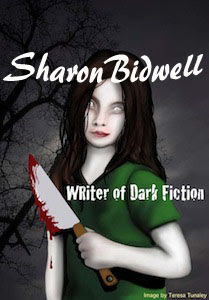Standard Manuscript Format. Yes, there’s a layout for the industry. I won’t go into the specifics here. Do a search and the details will readily appear. If the publisher’s guidelines don’t specify, it’s easy to find the format. Roughly, it’s one-inch margins, double-lined spacing, although there’s more to consider, such as what goes on the front page. I’m not talking about a cover letter, but the layout of the manuscript (MS) itself. Name, contact details, word count, title, what publication rights are on offered, and the MS may require page numbering and other information in the header and footer. Check Standard Manuscript Formatting alongside the publication’s guidelines, and if in doubt, keep it basic.
Forget fancy fonts—again, a publisher may specify but otherwise choose something simple such as Courier or Times New Roman. Forget fancy graphics. Forget all the computer programmes that create beautiful layouts. Publishers aren’t interested. They want to see and read the MS clearly.
I’ve heard horror stories of poorly laid out work. I recall one where an editor wrote an article about one particular MS she received in the post. It arrived in one of those padded envelopes that have fluff in the lining. As she struggled to open it, some of this ‘fluff’ went all over her desk. When she pulled the MS out, it stank of cigarettes and the pages had coffee cup ring stains. Result: Binned—not so much as a glance at it and no reply to the writer. Why? Simple. The editor rightly felt the writer had shown her no respect—hadn’t even shown his own work respect—and had therefore revealed himself to be someone she wouldn’t be able to publish, no matter how good the story might have been.
The MS is a writer’s product, work, even ‘baby’. Why not give it the best chance it could have? This starts with how one presents the work, whether sending it in the post or via email. It’s amazing how many writers never even think to look into how they should present a story. I’ve had editors thank me for my presentation, so what does that say?
If including a cover letter, then consider writing it as when applying for a job… which, in an actual sense, a writer does every time they submit a story. I’ve read an article about a teacher who had criticised a student for writing a covering letter to a publisher for ‘sounding as if trying to sell something’. At the risk of repetition I stress, publishing is a business. Writing is an art form—a craft—but beyond that, it is also a business, and the writer has to sell an idea and convince others it is worthy. This is the purpose of a cover letter and synopsis before one even comes to the MS. Try to find the name of the current editor and address it personally. It does not matter if a reader is the one who sees it first (yes, editorial departments have ‘readers’ and these people are the first line of defence a writer has to pass). Just as a personnel department may first see a resume before the manager, still, finding the name of the person in charge shows effort and research capabilities.
The publisher wants to know what any employer wants to know—what this person is capable of. Writing the letter is as important as the MS. Detailing achievements, experience etc., is important, but shouldn’t come across as boasting. Could be the writer has had nothing published and won’t have very much to say, but the way they wrote the letter reflects the writer and the work. Make it sound as if the story is the best the world will ever see, and needs no editing, and the publisher will think this isn’t a person he or she can work with. Sound arrogant, and the MS may go in the trash pile as swiftly as the editor reads the first paragraph of the cover letter.
It is, in reality, easier to explain what ‘not’ to do in a cover letter than how to write a good one. I’ve mentioned a synopsis and I’ll cover what that is separately sometime, but some may ask why they need to write both. Sometimes it’s unnecessary. Some publishers will specify for the writer *not* to put in a cover letter—another good reason to pay attention to guidelines—but most don’t say or ask. Information required in the cover letter can also vary according to project. The problem of writing a letter increases when considering a short story—shorter work can mean even less to say and a cover letter/and or synopsis may both have to be concise, precise, and dynamic.
The letter needs to introduce the writer; it may be an opportunity to draw attention to a few writing credits, but if the writer has none, it would be pointless to harp on about it. Some publications are looking for unpublished writers but going overboard and complaining how, despite sending work out for ten years, no one has yet seen the genius in the style and stories, will not sing a writer’s praises or make an editor take pity. One thing no editor does is publish out of pity. Equally, never state the opinion of friends and family. No publisher cares that a writer’s grandmother’s uncle’s second cousin adores the story. I’ve yet to meet a writer who has sold an editor on their work by protesting how good others consider the work to be. Unless that opinion is an endorsement by someone in a noteworthy and relevant field, it’s nothing but an obstacle.
Use a cover letter as an introduction—to the writer, to the work. Make it sound calm, crisp, friendly, optimistic, and the MS something that the publisher may be interested in looking at. Most publishers will deign to read letters and synopsis at the very least. Forgive the cliche, but this is the first hurdle—don’t fall over it.


No comments:
Post a Comment